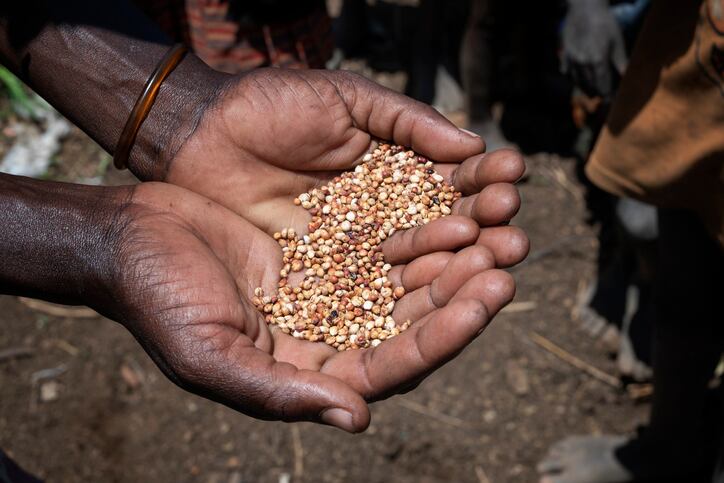The new variety has a yield potential of up to 8 tonnes per hectare, offering farmers a 25% yield increase over existing varieties. The achievement was the result of collaboration between the International Crops Research Institute for the Semi-Arid Tropics (ICRISAT) and the African Seed Company. The sub-Saharan-based groups have been in partnership striving to bring innovative and high-performing seeds to market.
The release of the new sorghum hybrid is a significant achievement resulting from innovative research conducted through the Sorghum and Pearl Millet Hybrid Parents Research Consortium (SPMHPRC), explained ICRISAT Director General Dr Jacqueline Hughes.
“This breakthrough is a prime example of how ICRISAT's research efforts are contributing to the wellbeing of farmers and their families across the continent, to global food and nutritional security, and ultimately, to the achievement of the Sustainable Development Goals.
"This innovation which marks another significant step towards a more resilient and food-secure future for Africa.”
Seed-Co Global Research & Development Head, Dr Gorden Mabuyaye added: “Our partnership is making a positive impact on farmers and their incomes, and this new hybrid will go a long way in mitigating the effects of climate change in Sub-Saharan Africa.”
‘Well-adapted to the agro-climatic conditions of Zimbabwe’
The new variety matures between 85 to 118 days, according to the project’s scientists, has good resistance to common leaf diseases and its strong straw structure helps maintain plant stability, which is essential for efficient and profitable crop production.
“This new hybrid is well-adapted to the agro-climatic conditions of Zimbabwe and offers a promising solution to sorghum farmers, particularly in those regions with moderate to erratic rainfall patterns,” said Dr Hapson Mushoriwa, ICRISAT’s Principal Scientist for Eastern and Southern Africa.
After ‘extensive evaluation’ the hybrid consistently demonstrated superior performance and has subsequently been submitted for release and commercialization, Dr Mushoriwa told FoodNavigator.
A panel of farmers has also evaluated the organoleptic properties of the hybrid. “The results indicated that the hybrid was highly rated by the panel, particularly in terms of its suitability for traditional food preparation. Furthermore, the hybrid is characterized as being short duration, which allows it to avoid terminal drought.”
Multiples uses as a food and beverage ingredient
The African Seed Company now plans to produce the seed at scale to sell to small-scale farmers from the drylands.
Households will use the sorghum hybrid to prepare staples such as the very thick porridge dish Sadza, cookies and fritters. Sorghum has also long been used as a brewing grain in Africa. The hybrid is therefore expected to be used in the production of a variety of both alcoholic and non-alcoholic industrial drinks. Sorghum-based alcoholic and non-alcoholic beverages have been made on small homebrew scale for centuries in Africa. Sorghum is also widely used in modern African industrial brewing as a cheaper alternative to imported barley.
European companies are investigating the nutritional and environmental benefits of sorghum
Food innovators in Europe are also eyeing sorghum as a cheaper grain alternative that boasts nutritional benefits as well as being a climate-resilient crop. UK challenger snack brand Insane Grain, for example, makes puffed snacks with sorghum, which it claims is a ‘nutritional powerhouse’ thanks to its high amounts of vitamins and minerals and gut-health benefits.
The EU-backed InnoFoodAfrica initiative is also making gluten-free crackers made from African crops such as amaranth, sorghum, teff, Bambara groundnut or cowpea to improve nutritional deficiency in the continent.
The development of the hybrid in Zimbabwe meanwhile was based on multi-environment trials over three successive cropping seasons, added Dr Rebbie Harawa, ICRISAT’s Regional Director and Country Representative – Kenya, Eastern & Southern Africa.
“The SPMHPRC had been a key factor in enabling ICRISAT and its partners to pool their resources and expertise to develop new varieties that are well adapted to the needs of farmers and the market, and this is another example of this success,” he said.


